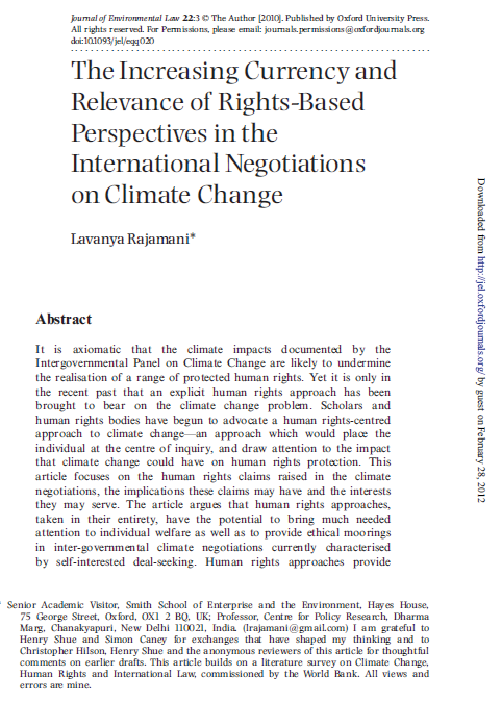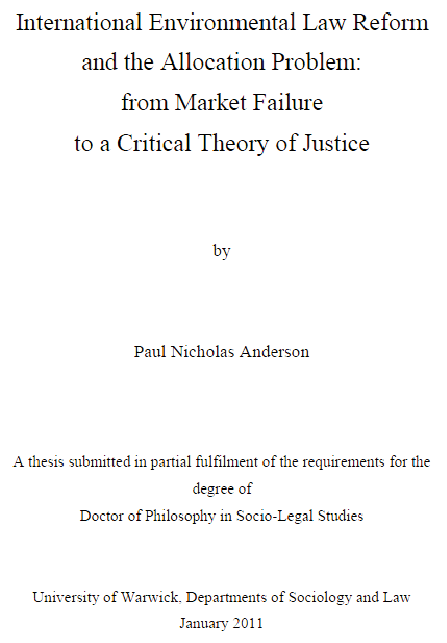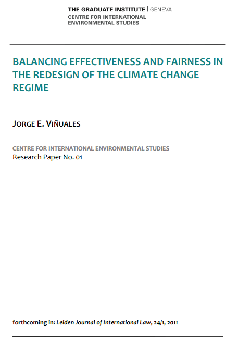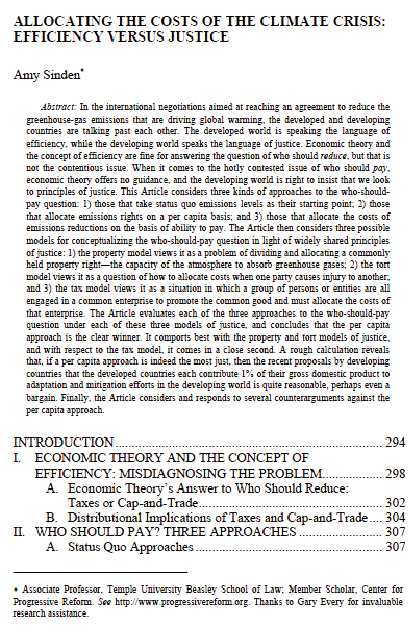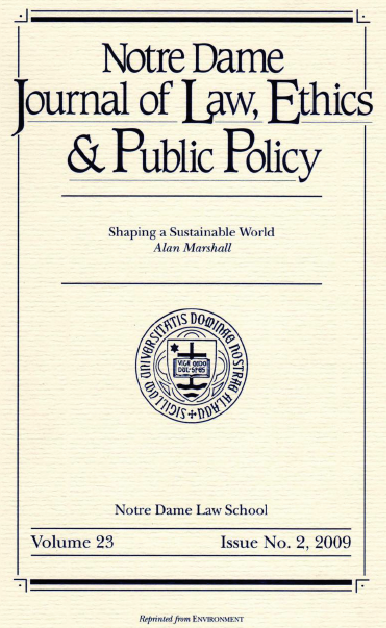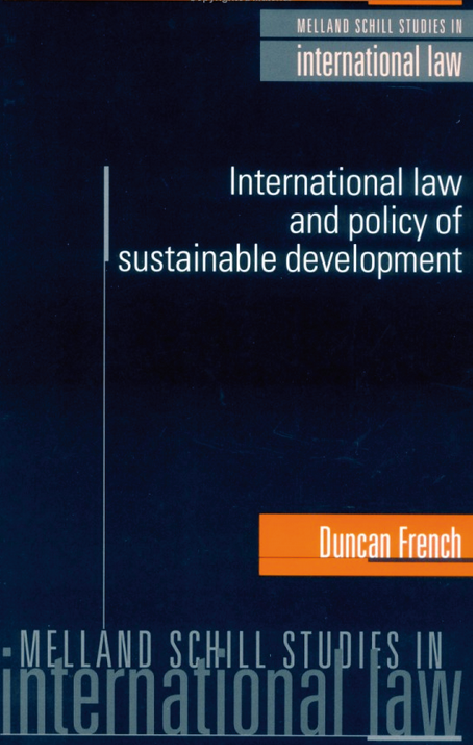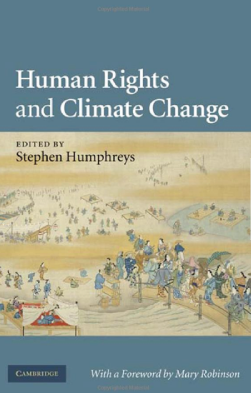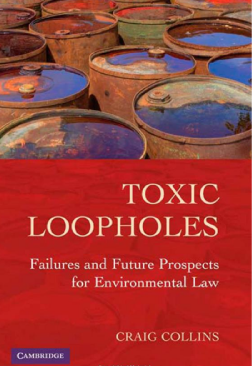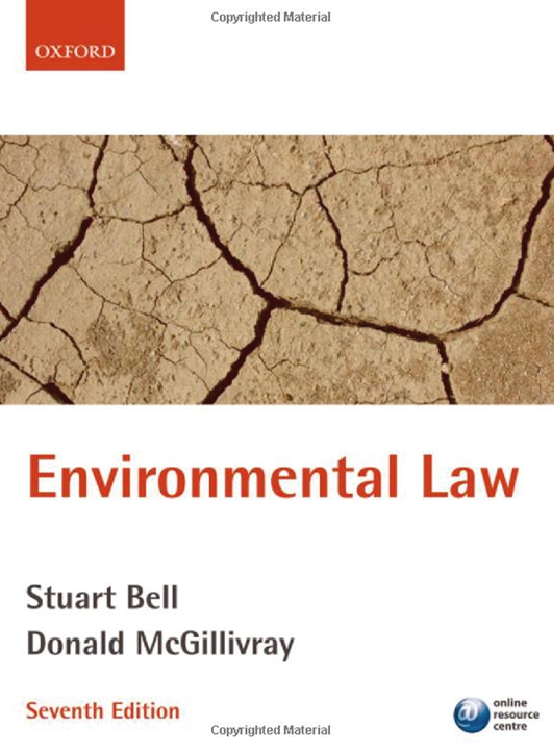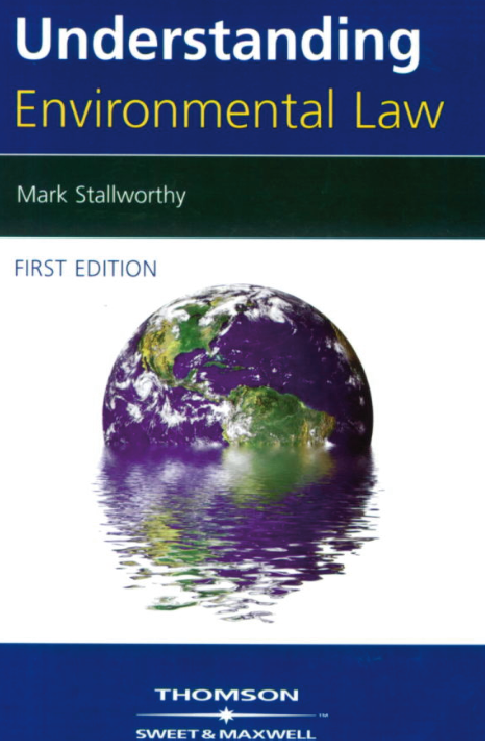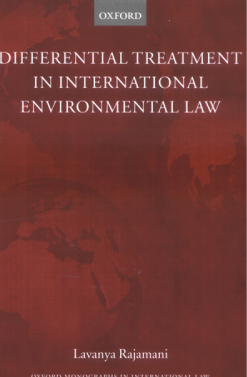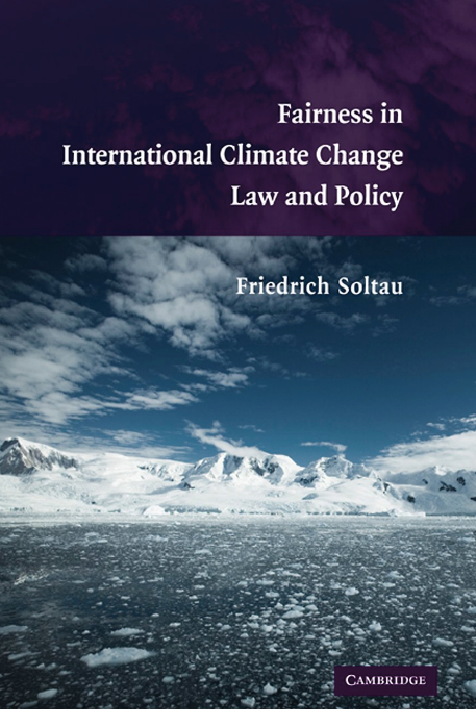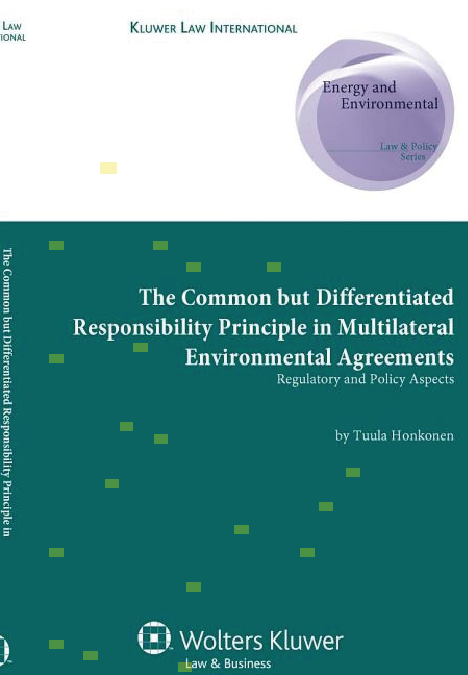C&C & Legal Institutions & Considerations
Whilst the UFCCC does not endorse an explicit ‘right’ to development, disputed as it is, it does recognise the central role that development plays in the climate change regime. FCCC Article 2 (Objective) specifies that stabilisation of green house gases (GHGs) in the atmosphere must be achieved within a time frame sufficient to ‘enable economic development to proceed in a sustainable manner’. The FCCC also recognises that in the pursuit of social and economic development, emissions and energy consumption in developing countries will grow. This, read in conjunction with the global stabilisation goal in Article 2, arguably suggests that the climate regime envisions a redistribution of the ecological space, with industrial countries reducing their emissions to make room for developing countries to grow. It could be further argued that such redistribution stems from a recognition that developing countries, and by extension their citizens, are entitled to an appropriate proportion of the ecological space so as to achieve and sustain a certain quality of life. The discussions in the climate negotiations, and on the sidelines of it, on the right to an ‘equitable sharing of atmospheric space’, survival and luxury emissions, the Contraction and Convergence proposal (based on per capita CO2 emission entitlements) and the Greenhouse Development Rights framework (based on the right of all people to reach a dignified level of sustainable human development), all draw on the equity-based right to development.In the climate context, although not typically labelled as such, the right to development takes within its fold the right to emit. The desire to occupy a larger share of the ecological space, and an entitlement to it, is a legitimate one. For in the words of Wolfgang Sachs, ‘[e]missions not only produce the burden of marginalization they also produce the benefit of power, and the right to use the atmosphere as a dumping ground represents a source of economic power. Disparity in access leads to disparity in economic opportunities. It partitions the world into winners and losers’. It is this, for instance, that inspires India’s position on climate change. India has committed that its percapita emissions will not exceed the levels of developed countries. India’s per capita emissions are 1.2 metric tons, while the OECD average is 13.2.35 If industrialised countries lower their per capita emissions to 4 metric tons, India would be committed to remaining at or below it. The USA, for instance, aspires to lower its emissions 80% by 2050. It is currently at 20 metric tons per capita. At 2050, if it meets its mitigation aspiration, it will be at 4 tons per capita, and India would be committed to staying below that. This both ties India’s commitment to that of OECD countries, as well as seeks an equitable redistribution of the ecological space. To the extent that these positions are per capita assessments, they are in essence taking an anthropocentric rights-based approach to the issue of climate change.
The Increasing Currency and Relevance of Rights-Based Perspectives
in the International Negotiations on Climate Change
Lavanya Rajamani - Journal of Environmental Law 22:3 (2010), 391^429
Necessary conditions
From the point of view of establishing an ecologically sustainable human culture, arguably more fundamental than differences in views on how to pursue this goal, is the question of what would count as an effective response in the first place. This is the question of what must change in current responses in order for sustainability to be achieved.To put it more formally, it is to ask which conditions are necessary for the possibility of arresting global environmental change at minimum faster that it is being caused. To address questions of means, or of implementation of means, without first identifying conditions necessary for this possibility is, as it were, to put the cart before the horse: it will remain unclear how any proposed remedy stands a chance of succeeding without some notion of what would constitute success. This problem is avoided if, from the outset, conditions necessary for the possibility of arresting global environmental change are sufficiently elucidated (Meyer 2007: 57-60).
International Environmental Law Reform and the Allocation Problem:
from Market Failure to a Critical Theory of Justice
Paul Nicholas Anderson
One approach is to provide equal per capita entitlements to anthropogenic emissions. Gardiner characterizes this stance as follows: "... some acceptable overall level of anthropogenic greenhouse emissions should be determined scientifically, and then this should be divided equally among the world's population, to produce equal per capita entitlements to emissions." This distribution criterion tends to ignore the historical emissions argument, as what counts is the current distribution basis, namely a country's population.However, some variants of the argument seek to adjust the equal distribution by taking into account the historical emissions record. In the policy arena, a distributional approach along such lines was formulated already in 1990 by the Global Commons Institute under the name Contraction and Convergence or "C&C". The 'contraction' term of the model refers to the overall emissions budget (a reduction in overall emissions) that is targeted, whereas the 'convergence' term focuses on the distribution of the entitlements to such emissions that tend, over time, to a target of equal per capita distribution, to be achieved at a given date.
For the current model, see the Global Commons Institute's website, available here. The convergence side of the C&C model is flexible enough to introduce several considerations in defining the rate and pace of convergence. As a result, it could also be seen as an expression of other approaches to climate ethics.
Balancing Effectiveness and Fairness in Climate Change
Leiden Journal of International Law, 24/1, 2011
Jorge E Vinuales
During the transition or “contraction” phase, developed countries would be allowed to emit significantly more greenhouse gases than their equal per capita share of emissions and would not be penalized for those excess emissions by having to buy allowances as they woould have to do under a prospective-equal-shares approach. In contrast, a prospective-equal-shares approach would distribute costs on the basis of equal shares immediately by allocating allowances on a per capita basis from the outset.This would allow the developed world to transition, not by letting them off the hook for their share of costs initially, but by allowing them to buy the right to continue releasing emissions in excess of their per capita equal share. Thus, by delaying an equal-shares allocation of costs for several decades, Contraction and Convergence would result in a much smaller transfer of money from the developed to the developing world than would a prospective-equal-shares approach.
ALLOCATING THE COSTS OF THE CLIMATE CRISIS: EFFICIENCY VERSUS JUSTICE
Amy Sinden - Washington Law Review
The leading model for distributing emissions rights between nations on a per-capita basis is the proposed international framework called Contraction and Convergence. Formulated in the U.K. by the Global Commons Institute, it recognizes that because the emissions cuts required by developed nations are so deep, convergence to per-capita emissions rights is only possible over time.
Notre Dame Journal of Law, Ethics & Public Policy - Shaping a Sustainable World
Alan Marshall
Reducing per capita differences, while concurrently addressing the environmental implications of the total global emissions - through the fixed global emissions budget - the contraction and convergence approach is arguably both equitable and sustainable. Achieving both objectives, while marginalising neither, is of course the untimate goal. Nevertheless, even with approaches such as contraction and convergence where this appears theoreticaly attainable. Supporters of the approach would argue that contraction and convergence is underpinned by an underlying philosophy based on respect for universal human rights.
International Law
Duncan French
"The best known rights-based approach to climate change mitigation is the 'contraction-and-convergence' (C&C) framework presented by the Global Commons Institute (GCI) at the second Conference of the Parties to the UNFCCC in 1996. The idea, very briefly, was to articulate a longterm mitigation strategy that, while reducing the overall amount of GHG in use over time, would also lend toward equalising GHG emissions per person on a global scale.In such a regime, as overall global emissions dropped, the fall would be more precipitate in wealthy countries, while usage in poorer countries would continue to rise for a period in line with their greater development needs - toward convergence between rich and poor countries at some point in the future. Initially GCI abjured the term ' rights' in reference to C&C, because they regarded the atmosphere as a global commons that 'cannot be appropriated by any state or person.
Today, however, GCI claims that C&C 'establishes a constitutional, global-equal-rights-based framework for the arrest of greenhouse gas emissions. This new formulation appears to be in line with a general shift toward the language of rights in the climate change arena. Whereas the 'rights' at issue in models such as C&C amount to speculative universal 'rights to emit' GHGs, with no obvious basis in human rights law, they might be framed as deriving from the 'right to development', which is mentioned somewhat obliquely in the UNFCCC.
Such a derivation would depend on demonstrating that 'subsistence emissions' were in fact required to achieve basic human rights, a claim that is at least plausible. The right to development is a difficult and somewhat confusing notion. In international law, it has had, since 1986, declaratory (non-binding) status, and has been a subject of protracted and sometimes polarising discussion within the United Nations.
But whatever its doctrinal status, discussion of the right to development has evolved with time, albeit rather as a space for negotiating the differing interests of different parties in the international system rather than as law in the ordinary sense. For many, particularly in countries most vulnerable to climate change, it still provides a natural hook for assessing the rights implications of climate change and the policy premises that should underlie solutions."
Human Rights and Climate Change
Stephen Humphreys
The basic plan, known as ‘Contraction and Convergence’ has important advantages. It takes into account differing circumstances and means of all countries [rich and poor], thereby meeting the developing countriesm for fairness, at the same time it eventually imposes the same climate-safe GHG limits on everyone.
Toxic Loopholes: Failures and Future Prospects for Environmental Law
Craig Collins
In the absence of systemic change, there certainly are things that have been done and more can be done in the future to lessen capitalism’s negative effects on the environment and people. There is no particular reason why the United States can’t have a better social welfare system, including universal health care, as is the case in many other advanced capitalist countries. Governments can pass laws and implement regulations to curb the worst environmental problems.The same goes for the environment or for building affordable houses. A carbon tax of the kind proposed by James Hansen, in which 100 percent of the dividends go back to the public, thereby encouraging conservation while placing the burden on those with the largest carbon footprints and the most wealth, could be instituted. New coal-fired plants (without sequestration) could be blocked and existing ones closed down.
At the world level, Contraction and Convergence in carbon emissions could be promoted, moving to uniform world per capita emissions, with cutbacks far deeper in the rich countries with large per capita carbon footprints. The problem is that very powerful forces are strongly opposed to these measures. So such reforms remain at best limited, allowed a marginal existence only insofar as they do not interfere with the basic accumulation drive of the system.
What Every Environmentalist Needs to Know About Capitalism
Fred Magdoff and John Bellamy Foster
Domestic tradable quotas have strong links with the Contraction and Convergence proposal for a globally fair allocation of emissions rights, under which states would over time have emissions rights on a per capita basis. Contraction and Convergence
Environmental Law
Stuart Bell Donald McGillivray
The recognition of differentiated responsibilities is a noble starting point, offering genuine hope for delivering global warming resonses alongside a rebalancing of the inequalities in wealth and capacity leading ultimately towards Contraction and Convergence.
Understanding Environmental Law
Mark Stallworthy
Aubrey Meyer attended all the sessions at the UNFCCC and has made an important contribution with his theory of ‘Contraction and Convergence’ which proposes setting a global cap and then gradually reducing emissions entitlements until each person on the planet has the same emissions rights.
Lawless World: Making and Breaking Global Rules
Philippe Sands
The ultimate objective of the UNFCCC is the stabilization of GHG concentration in the atmosphere. This is a recognition of what has come to be know as the Contraction and Convergence vision.
Differential Treatment in International Environmental Law
Lavanya Rajamani
Equity and fairness concerns are reflected in the Framework Convention itself. Equity is considered explicitly in many of the proposals for a post-Kyoto climate agreement, perhaps most prominently the Contraction and Convergence proposal, put forward by the Global Commons Institute, see: -
Fairness in International Climate Change Law and Policy
Friedrich Soltau
Contraction and Convergence is a formula of burden-sharing that bears close resemblance to the egalitarian or 'equal entitlements’ approaches. The purpose of the convergence measures is to bridge the current gap between developed and developing countries.Contraction and Convergence was devclopcd for and has subsequently been advocated in the negotiations under the Global Climate Change Convention. Consequently. the regime has given some recognition to the formula. For instance in the context of guiding states in the usc of the flexible mechanisms of the Kyoto Protocol the COP has emphasized: The Parties included in Anncx I shall implement domestic action in accordance with national circumstances and with a view to reducing emissions in manner conducive to narrowing per capita differences between developed and developing country Parties while working towards the achievement of the ultimate objective of the Convention.
It has becn claimed that Contraction and Convergence is the only method of distribution of emissions rights thatcould be accepted voluntarily by the nations of the world. but its political support remains very uncertain. Developing countries are generally in favour of contraction and convergence because it would not require them to immediately shift away from their basic needs and economic growth: the emissions constraints of the developing world would bite only gradually as per capita emissions increased.
Furthermore, by emphasizing entitlements as well as commitments Contraction and Convergence could arguably help address the sense of inequity that arises from the unrestrcicted past emissions of industrial countries.
The common but differentiated responsibility principle in multilateral environmental agreements - Tuula Honkonen

